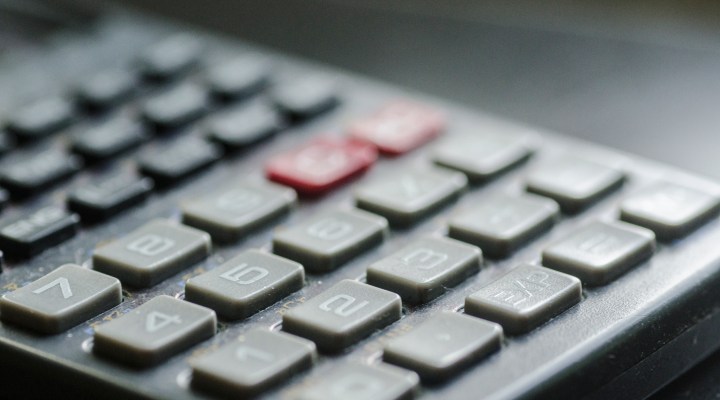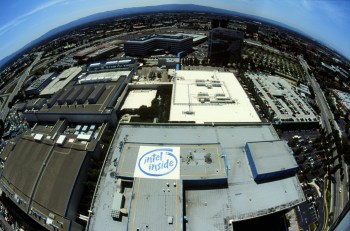
Tracing the history of electronics through the Old Calculator Web Museum
Tracing the history of electronics through the Old Calculator Web Museum

Our series on the birth of the transistor — and with it, the birth of our modern technological world — brought us to some interesting places. It turns out the transistor really does live in just about every technological advancement you can think of amid all of the electronic innovations over the years.
When researching the significance of a novel approach to transistors called MOSFET, we learned that this was the technology that really unlocked the transistor’s potential. It allowed for them to continually get manufactured smaller and smaller, which meant you could fit more and more of them on a microchip to increase processing power.
Back in the 1970s, early microprocessors were breaking ground in calculators. In fact, the Busicom 141-PF calculator featured the first commercial microprocessor, the Intel 4004.
And to learn more about that particular calculator and others like it at what was then the cutting edge of technology, we turned to Rick Bensene, curator of the Old Calculator Web Museum.
“It’s the 141-PF which is the special one,” Bensene said. “That became the very first consumer item to be produced that utilized a computer on a chip. They’re very hard to find today.”
“Marketplace Morning Report” host David Brancaccio spoke with Bensene, and the following is an edited transcript of their conversation.
David Brancaccio: I have a few vintage pieces of electronics in my house, but it hasn’t gotten out of hand. Looks like it got out of hand with you.
Rick Bensene: Yeah, it has. It’s been a 30-year obsession, I guess you’d call it, more than anything else [laughs].
Brancaccio: Why the calculator?
Bensene: Well, for me, it was very early in my life, I was exposed to math. And calculating machines. As I got older, machines turned to electronics. And they were even more fascinating, because I couldn’t figure out how these boxes full of little bitty pieces would do things like they did. And so that kind of got me on a path of becoming interested in electronics, and how it all fits together. And, and when I got a little bit older, I started having a little bit of money. So I started just acquiring the things on eBay and going to swap meets and stuff like that, and picking them up.
Brancaccio: I think many of us — I mean, I’m one of them — our first experience with programming something was the Texas Instruments calculator that let you put in some basic commands.
Bensene: Yeah. TI and HP kind of started the realm of pocket calculators being programmable. But prior to that there were big, big desktop machines that were programmable, that could do essentially the same thing, but they just took a whole lot more space, because they didn’t have the benefit of the reduction in size of transistors to sub-microscopic, and integrated circuits. And so that allowed these big desktop machines, that took most of the desktop, to shrink down to be something you hold in your hand. And still write programs on that could do really useful things.
Brancaccio: And you’ve noted this on your website. I mean, you write that much of the technology we enjoy today, with microprocessor brains, have their genesis in the technologies developed as the result of the electronic calculator. I mean, and given the fact that the microprocessor brains are built upon transistors — I mean, the calculator really moved the transistor forward.
Bensene: Exactly. Prior to the introduction of an electronic calculator, transistors were used mainly for consumer things in audio devices. I mean, they were for radios and televisions and analog kinds of systems. The first digital use of the transistor for consumers was in a calculator. And even though it was kind of specialized in those days, and they were rather expensive, it was considered a consumer item. And part of the whole idea of why the calculator became such a big deal, in terms of the development of technologies, was that it was a new realm of application for the transistor that had a potentially huge market. And, of course, potentially huge markets are big-time targets for people who want to make a lot of money. So, it was just a natural evolution to start producing digital devices for consumer use using transistors. It was quite an evolution that happened over a very short period of time, and went from, you know, many, many [integrated circuits] in a calculator to a single chip just literally over the course of five or six years.
Brancaccio: Let’s talk about … I don’t know if it’s — to use a “Moby Dick” reference — your white whale, but there’s one calculator that you don’t have that maybe you’d like to lay your hands on. (Speak up, audience, if you know how to help him out.) There’s this Busicom 141 produced by a Japanese company, but really engineered by Intel Corporation, and that thing’s revolutionary.
Bensene: Yeah, it is. It’s a very special machine. And actually, the model is 141-PF. Because prior to that special calculator, Busicom did sell a machine that was called a 141, which was a transistorized calculator that was significantly different. So the museum already has a 141, but it’s the 141-PF, which is the special one. And the reason it’s special, the name of the company was Nippon Calculating Machine Corporation in Japan and they had a brand name called Busicom. They had a design for a huge, complicated set of chips that would be able to be used in varying different combinations to create varying different types of calculators: one for scientific or for engineering or specialized business applications. They shopped that design around in the U.S. to chipmakers, and they went around to all the major manufacturers in business, and they all turned them down. They considered the Japanese to be kind of competition, and they didn’t want to help out the competition. So they were a bit frustrated.
And they ended up hearing about this new company called Intel. And they were relatively new on the scene. So they took their idea to Intel, and Intel looked at it and said, ‘Yeah, we can do that for you, we can make those chips,’ even though they weren’t really sure they could. And it turns out, they couldn’t. They kind of got themselves in a bit of a bind. But one of their engineers had an idea: instead of using a whole bunch of specific chips that you had plugged together in different ways, they were gonna make just a little single chip computer that you can program to be any kind of calculator you wanted.
And so Intel went about putting this chip together. And they made a few other chips for holding the program and for memory storage and for input/output for the keyboard and the printer, and put it all together. And they produced this first little computer on a chip. It wasn’t really a full microprocessor. But it was the first core of a computer on a single chip. [Nippon Calculating Machine] went off and built the calculator based on that called the 141-PF. That became the very first consumer item to be produced that utilized a computer on a chip.
Brancaccio: So do you also have some mechanical calculators?
Bensene: I do have a few. I specialize in electronics, because that’s kind of the place that the greatest amount of fascination develop. But I do have some mechanical machines that are of special interest to me, mainly because they were mechanical calculators that I was exposed to when I was very young. And so when I’ve run across those available, if they had some kind of impact on me when I was young, and kind of got me started in this whole thing, I will snap them up and put them on the website. I do spend a lot of time doing maintenance on them, because after 50-plus, 60, nearing 60 years, they need to be lubricated, and, you know, kept really happy. Because mechanical things tend to degrade a lot more than electronic things. And so I have to do my diligence and keep those old mechanical machines humming properly.
Brancaccio: So, Rick, this seems like a labor of love. What do you do?
Bensene: I’m a IT guy. I’ve been in IT for 40 years. I spend the day with computers. And I get tired of computers. And so the time that I have other than just living life, you know, I like to stay away from computers. And the calculators are kind of like computers, but they’re not. And the technology in them is significantly different, especially in the earlier ones. And it’s fun to explore, because a lot of times you get a calculator and there’s no documentation, there’s no schematics, there’s no logic diagrams, there’s none of the kinds of things that you need to build to troubleshoot them. And the whole notion of fixing something that you don’t have any documentation for is quite a challenge. And that’s the part that I really enjoy, is taking something that’s broken, and getting them running again. And that’s the part that I really enjoy. It’s the restoration of them, getting them running again and then taking them and documenting them on the website so that people can see what the technology was like back in those days.
There’s a lot happening in the world. Through it all, Marketplace is here for you.
You rely on Marketplace to break down the world’s events and tell you how it affects you in a fact-based, approachable way. We rely on your financial support to keep making that possible.
Your donation today powers the independent journalism that you rely on. For just $5/month, you can help sustain Marketplace so we can keep reporting on the things that matter to you.

















